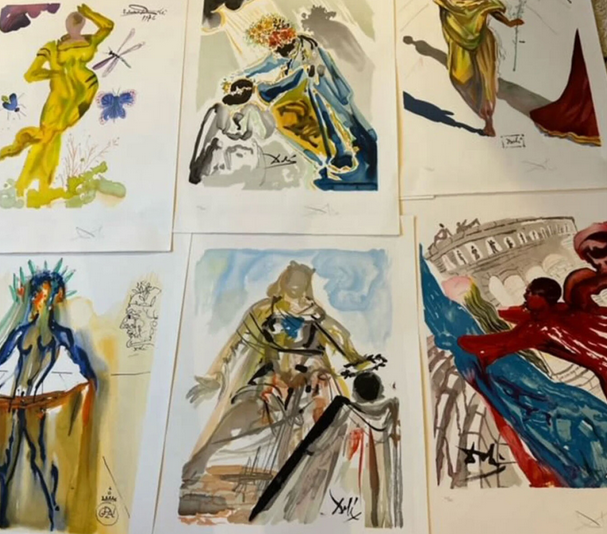In 2024, the fields of archaeology and art history were filled with surprises, with discoveries offering unique insights into human history, culture, and art.
From lost masterpieces and ancient artifacts with unexplained purposes to findings that shed light on the life and daily routines of past centuries, experts continued to expand our understanding of the past. However, this year wasn’t solely defined by scientific efforts. Serendipitous discoveries by amateurs, workers, and even social media posts demonstrated that the past still has much to reveal.
Here are 15 of the most remarkable discoveries of the year, as ranked by CNN:
1. The Roman Dodecahedron and Its Mystery
Amateur archaeologists in England unearthed a unique Roman dodecahedron, approximately 7 centimeters in diameter, considered one of the largest ever found. The artifact, crafted with exceptional skill, remains an enigma, as there are no references in Roman literature or art describing its use. Experts speculate that it might have had a religious purpose or been connected to astronomical observations.
2. A New Work by Chopin
A handwritten score by Frédéric Chopin was discovered in the Morgan Library in New York, unveiling an unknown melody by the composer. The waltz, written on a small manuscript sheet, was likely intended as a gift. However, the absence of the composer’s signature suggests that he may have changed his mind or left it unfinished. This discovery marks the first unknown composition by Chopin found in a century.

3. Traces of Henry VIII
A portrait of Henry VIII was accidentally identified in a photograph from an event in England. The artwork, with its distinctive curved top, is believed to be part of a lost collection of 22 Tudor-era portraits. Experts suggest that the painting is a fragment of the scattered Sheldon Collection, which holds significant historical value for the period.
4. Sensual Frescoes in Pompeii
In Pompeii, archaeologists uncovered frescoes depicting the goddess Aphrodite with her mortal lover Adonis, as well as Hippolytus with Phaedra. Although these artworks were found in a less significant house, they demonstrate that even simpler Roman residences could feature impressive decoration, shedding light on Roman aesthetics and their mythological perceptions.
5. New Insights on Plato
Using artificial intelligence, researchers deciphered charred papyrus manuscripts from Pompeii. These manuscripts revealed details about Plato’s death, including his burial in a secret garden of the Academy, and his disappointment with the music played at his deathbed.

6. Ancient Lipstick from Iran
In Iran, a 4,000-year-old vessel containing red pigment made of hematite and natural ingredients was discovered. Scientists believe it was used as lipstick or rouge, indicating that people of the time had a sophisticated sense of aesthetics.
7. Hermes in the Sewage System
In Bulgaria, excavations uncovered a 2.1-meter-tall ancient Greek statue of Hermes, deliberately buried beneath a sewage system after an earthquake in the 4th century CE. The statue was exceptionally well-preserved, suggesting that locals made efforts to protect their artworks.
8. The Palace of Pliny the Elder
During construction work in Naples, a Roman villa attributed to Pliny the Elder was discovered. Overlooking the Bay of Naples, the villa shows signs of strategic importance, and experts believe that further excavations will uncover more rooms and possibly frescoes.

9. The Frescoes of Dahshur
In Egypt, archaeologists discovered a mastaba, a 4,300-year-old tomb adorned with paintings depicting scenes of daily life. These artworks highlight the significance of art in the lives of people during the Old Kingdom.
10. A Giant Diamond
In Botswana, a 2,492-carat diamond was unearthed, making it the second-largest ever discovered. The diamond is expected to hold immense value, and its extraction was carried out using specialized equipment.
11. The “Missing” Picasso
In Italy, a lost portrait of Dora Maar by Picasso was identified after years of research. The artwork, deemed authentic, was discovered in a basement covered with soil and lime.

12. The Marble Treasures of Peterborough
In a parking lot in England, a Roman marble head was discovered, followed later by the entire statue. It is believed to have been transported from Italy in the 18th century by the estate’s owner.
13. Cave Art in South America
In Argentina, paintings dating back 8,200 years were discovered, making them the oldest known in South America. Scientists believe even older artwork may exist in unexplored caves.
14. The Lost Works of Dalí
Ten signed lithographs by Salvador Dalí were found in a London storage unit, forgotten for five decades. This discovery provides new insights into the work of the great surrealist artist.

15. The “Magical” Carvings of England
Hundreds of apotropaic symbols were found carved into the walls of a tower in Lincolnshire. Dating back to the early 17th century, these symbols were meant to protect residents from demons and evil forces

Ask me anything
Explore related questions





